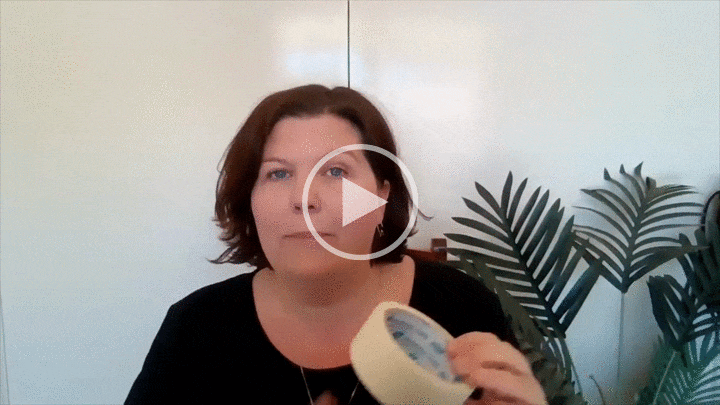6 Potential Roadblocks to Early Reading Results

So, you’ve adopted a structured approach to phonics but aren’t seeing the growth you had hoped for? This lack of growth could be evident in some, most or all students and leave you scratching your head, wondering what went wrong? This week, I’d like to point you in the direction of a few things that might need tightening to get those results you are looking for.
Reason #1 – Student focus is not what it could be
Our early years students are little people. Their ability to pay attention often requires us to direct and guide them so that they can take full advantage of the lessons we are teaching. Some ways to help students stay on track and focused include:
- Have assigned seating. Allowing students to choose their adventure in where they sit can lead to all sorts of shenanigans that you then have to interrupt your lesson to sort out. Anticipate challenges in having certain students sitting next to each other. Identify the students who need the most directing and support to stay focused and seat them at the front or closest to you.

- Work to the clock. Let your students know that great learning is focused learning. Challenge your students to ‘stick together’ and stay on track so that you can complete your teacher-led lesson within a specific time. Set students up for success by giving plenty of time at first and then gradually reducing the allowed time. A phonics and word-level reading and spelling lesson should take about 20 minutes if the pace is snappy.
- Play the student teacher game. Pop a tally chart on the board. Each time the students are off track, you get a point. When they are on track, they get points. If needed, add an incentive such as 5 minutes of extra play or a Bluey Episode to increase motivation. This one is a short-term measure aimed at helping students (and you) experience a successful lesson so that they know what it feels like. From there, it’s much easier to maintain.
Reason #2 – Not Providing Stretch
You might have heard about the Goldilocks point. This is when learning is not too easy and not too hard. Learning that is too easy makes the intrinsic load of the lesson too low, and you run the risk of students becoming disengaged. Make sure that you provide a little extra challenge for students who are ready for it by having a couple more complex words in your phonics lesson or providing longer decodable texts in the lesson. 
Reason #3 – Not Being Targeted Enough Your Lesson
Reason #3 is pretty closely related to Reason #2. Engaging in ‘cast the net teaching’ where you throw content out there and hope you catch something is not as likely as targeted teaching when it comes to getting those results you are after. Use your monitoring assessment to see where students might be up to every 6 – 8 weeks. Pay attention to how students respond in individual lessons and review things as needed. This is more like fishing with a line that has specialised bait and lure (sorry if this is incorrect terminology. Fishing is not in my background knowledge!) than the ‘cast the net’ teaching I mentioned earlier. We run into this difficulty when we try and ‘teach to the middle’. Phonics is one of those areas where we need to pay special attention to what students know and what is to come next. It doesn’t mean that small group work is the only way to go, but it does mean that you need to be aware of exactly where your students are up to so you can meet them there. 
Reason #4 - Not Enough Time on Task
Maximising time on the tasks that matter is critical if we are going to get great results for all students in our class. Some students can cruise by with a little bit of this and a little bit of that, but must most need significant time on the important stuff to make it stick. Including crafts, funsy activities, trips around the room to ‘read things on the wall’, or unrelated worksheets does not provide a direct path to learning. When it comes to phonics and decoding, we need students engaged in connecting phonemes with graphemes, decoding words, reviewing words, encoding words and engaging with sentences for as much time as possible. The most efficient way to do this is through teacher-led lessons. 
Reason #5 – Mixing Approaches
In our quest to ‘not waste money’, it’s common for schools to adopt a great new program but then decide to keep the old programs or approaches as well. Money already spent is a terrible reason to keep ineffective practices around. The reason we are replacing levelled texts, analytic phonics and sight word programs is that they do not align with what we understand about how children learn to read. You can teach the best phonics lesson in the world and give aligned decodable texts in your lessons, but when you then send a predictable/levelled text home for students to read, you are potentially putting serious roadblocks in the path of many of your students. 
Reason #6 – Not Providing Enough Exposures/Repetitions
One of the ways to seriously supercharge your students’ growth is to help them make learning stick. Packing in as many repetitions as possible into a lesson is a way to do this. Think about how you can increase the number of times students are required to respond in your lessons. Instead of showing a grapheme card and having students say the phoneme once or twice, show it 6 times and make it short and sharp. Repeat this at the end of the lesson and then again after recess/lunch. By simply examining how many times your students are responding and then (at least) doubling it, you are helping to create stronger connections in their little brains. Further maximise the impact by being consistent with your review and making sure that you engage students with retrieval in a way that is spaced out over time. Review what you have taught the day before, what you taught last week and what you taught 3 weeks ago. Having a repeatable routine with simple resourcing will make this task much more manageable. 
Not getting the results you were hoping for in your phonics/reading assessment is not a reason to move on to something new. Changing practice and growing your skills in reading instruction is about the long haul. Take the time to reflect on your practice. Work with your colleagues to observe each other and give feedback. Make a checklist of what is important in your lessons and support each other in building instructional practices that help every child move the needle.
To help you strengthen your practice, I have put together a new FREE, 5-day email program, “5 Things You Must Know to Get Children Reading” Beginning on July 4th, you will receive an email each day with a short video clip, guidance and downloads to help you on your teaching journey. Click the link to sign up for this brand-new program.

 Jocelyn Seamer Education
Jocelyn Seamer Education
3 comments
'Work to the clock'; that got me thinking. I can easily spend twice that amount of time on a phonics/spelling lesson. I will put the timer on as a reminder to me tomorrow! This article also got me thinking that I probably don't need to be revising every sound, every day. I will focus on the newest sounds and throw the early ones in every now and then. That should also save me some time. Thanks for the article, Jocelyn.
Hi Jocelyn,
As always, your blogs come just at the right time for me. Thank you ! I have a grid seating section without names, but today I put names. What a difference!! The partner share worked extremely well. This is stuff I know, but the reminder was beautifully timed. Thank you !
Excellent post! Would love an infographic/summary that I could pin-up in the staffroom. Just an idea. Thanks for all that you do.
Leave a comment